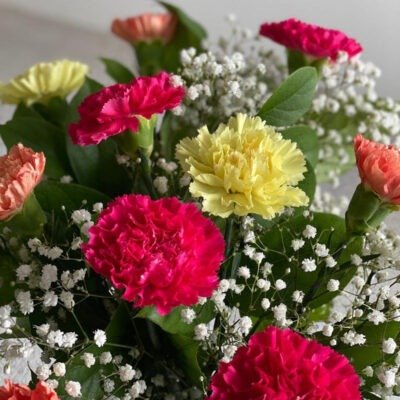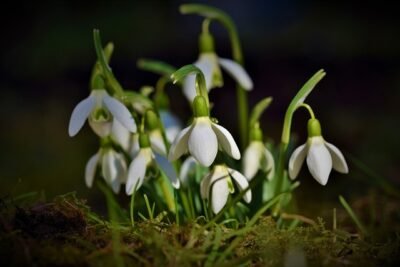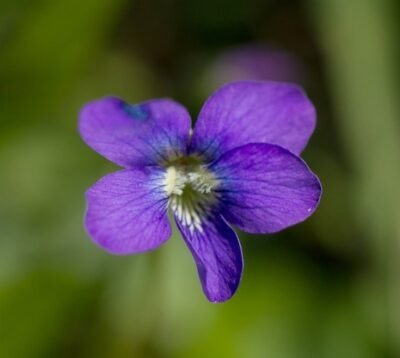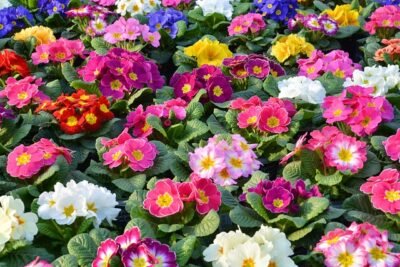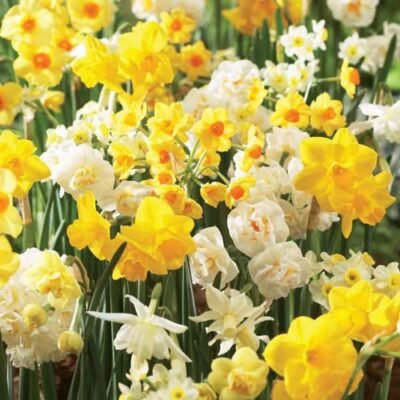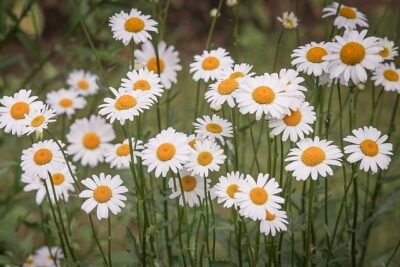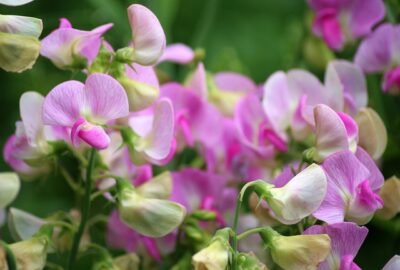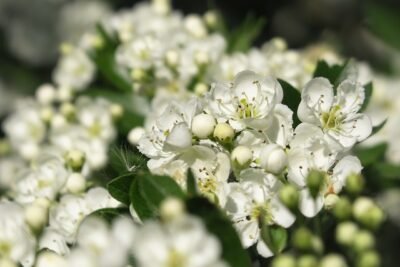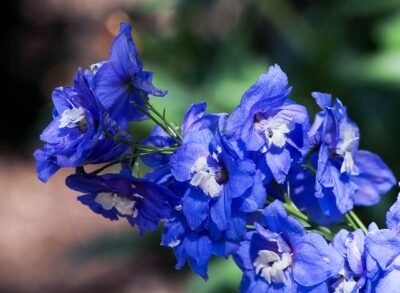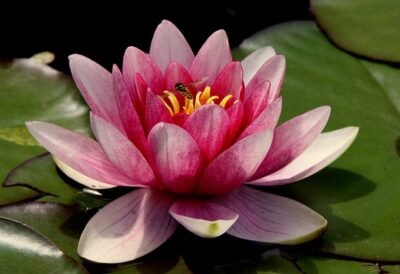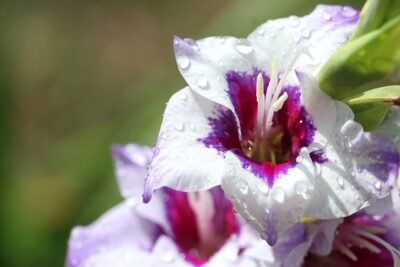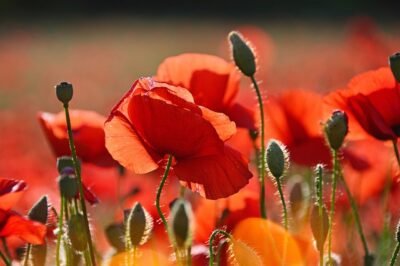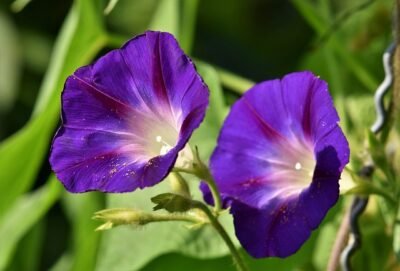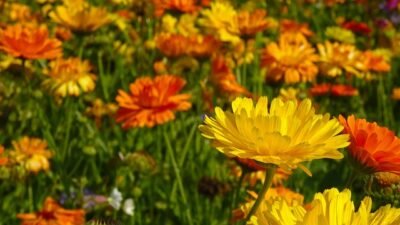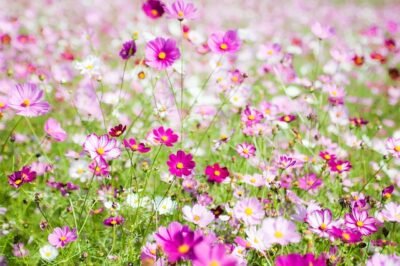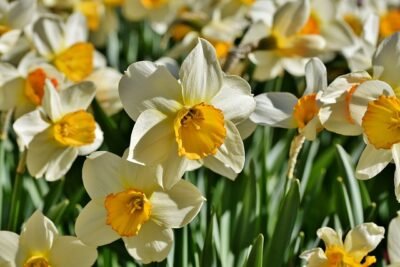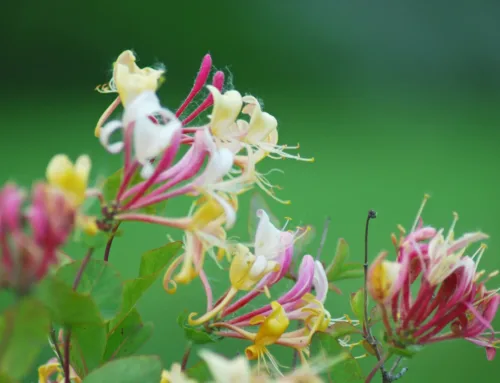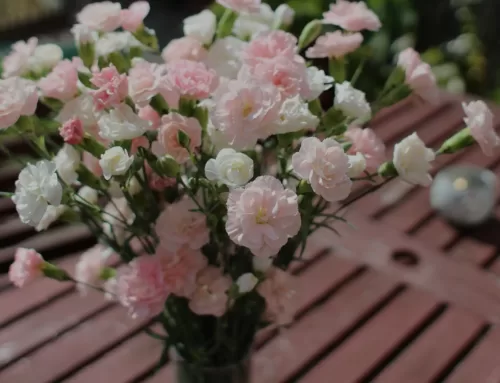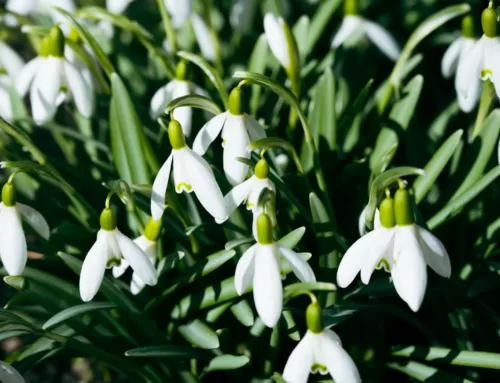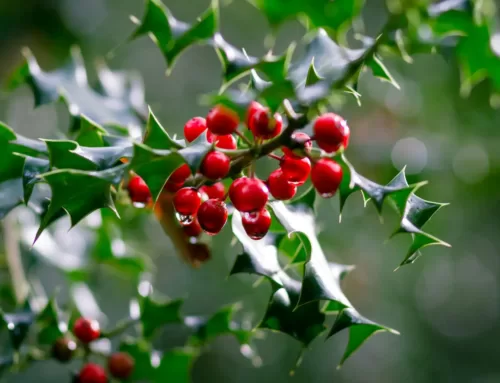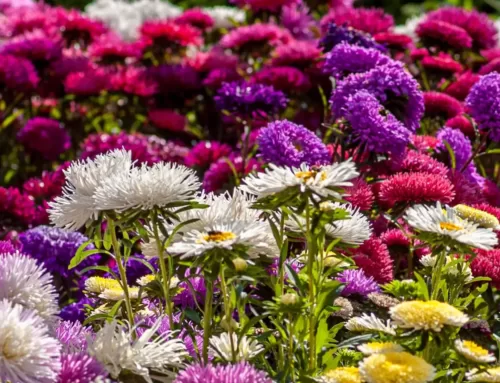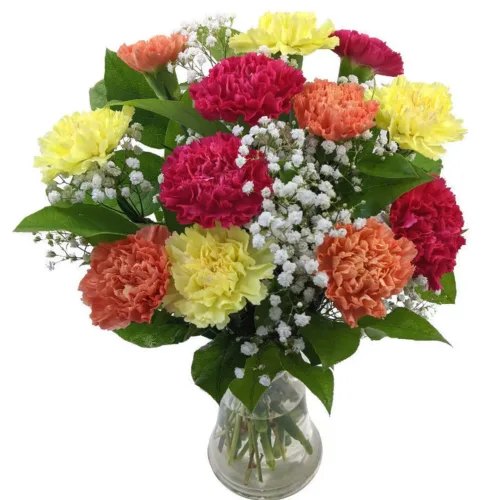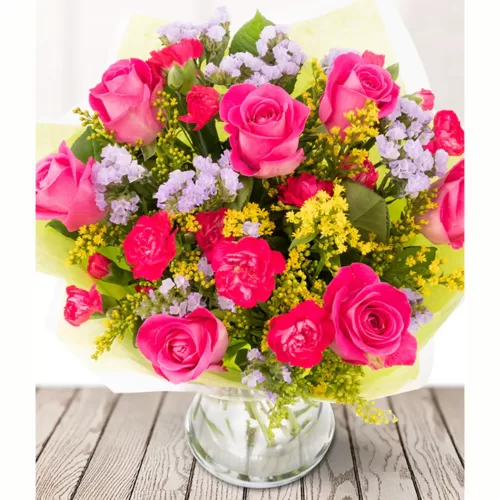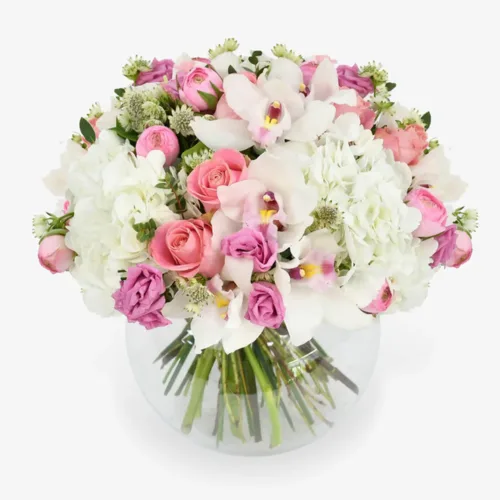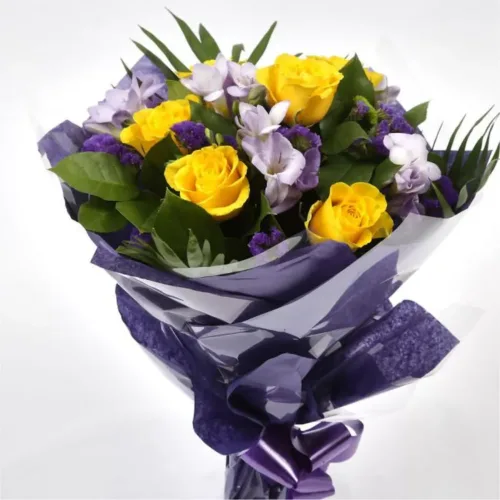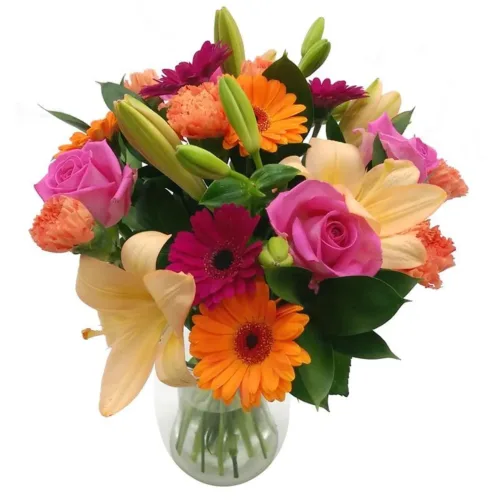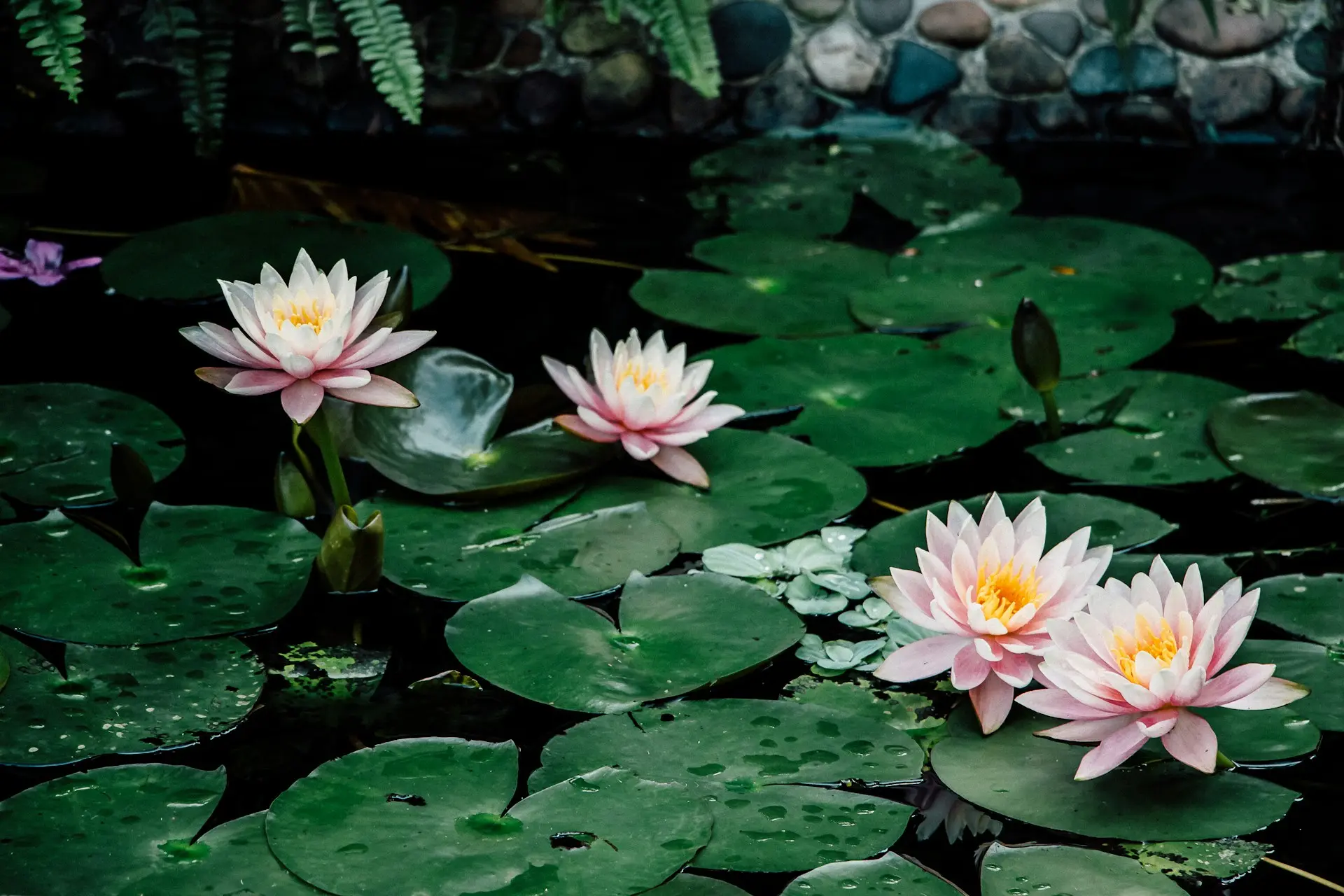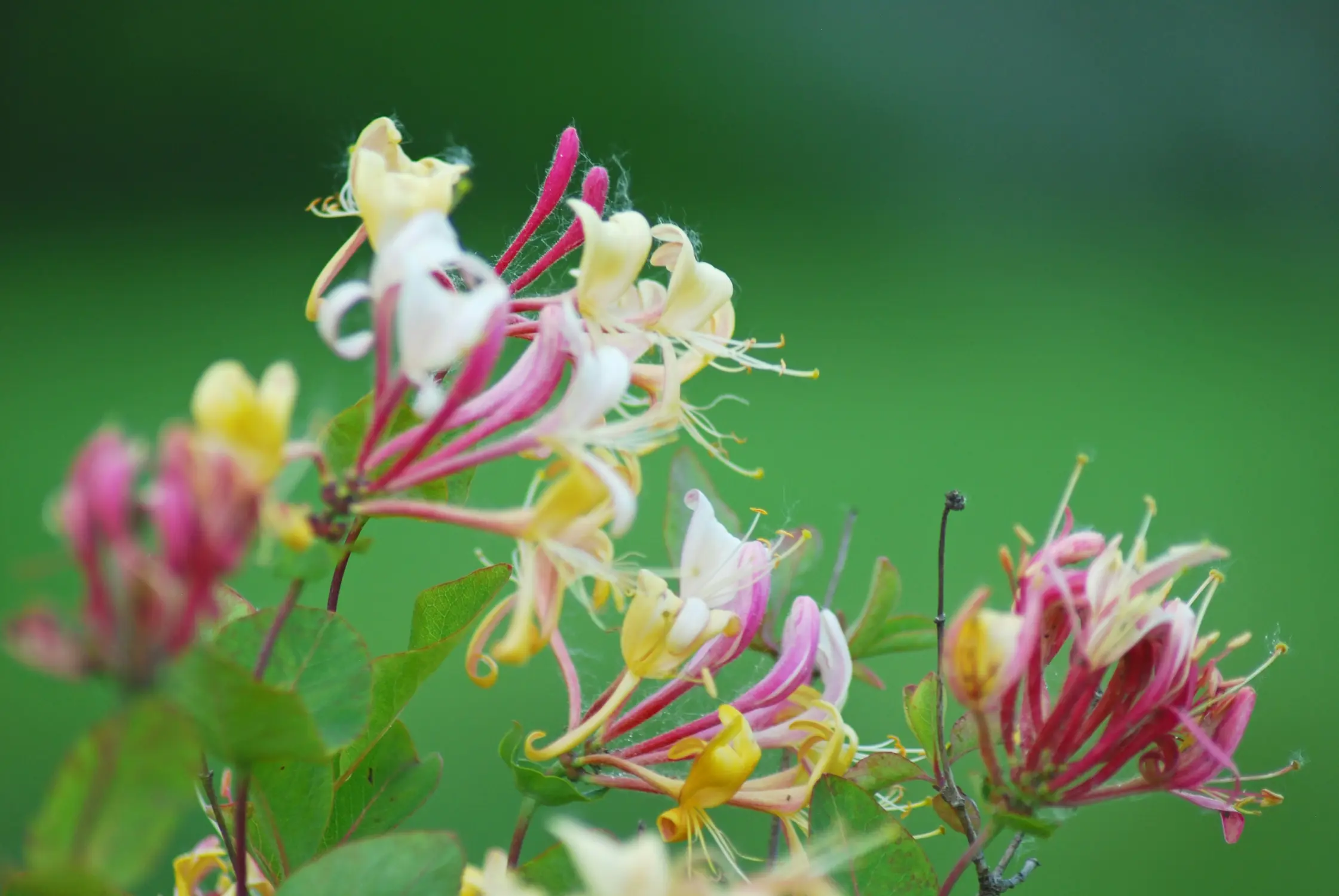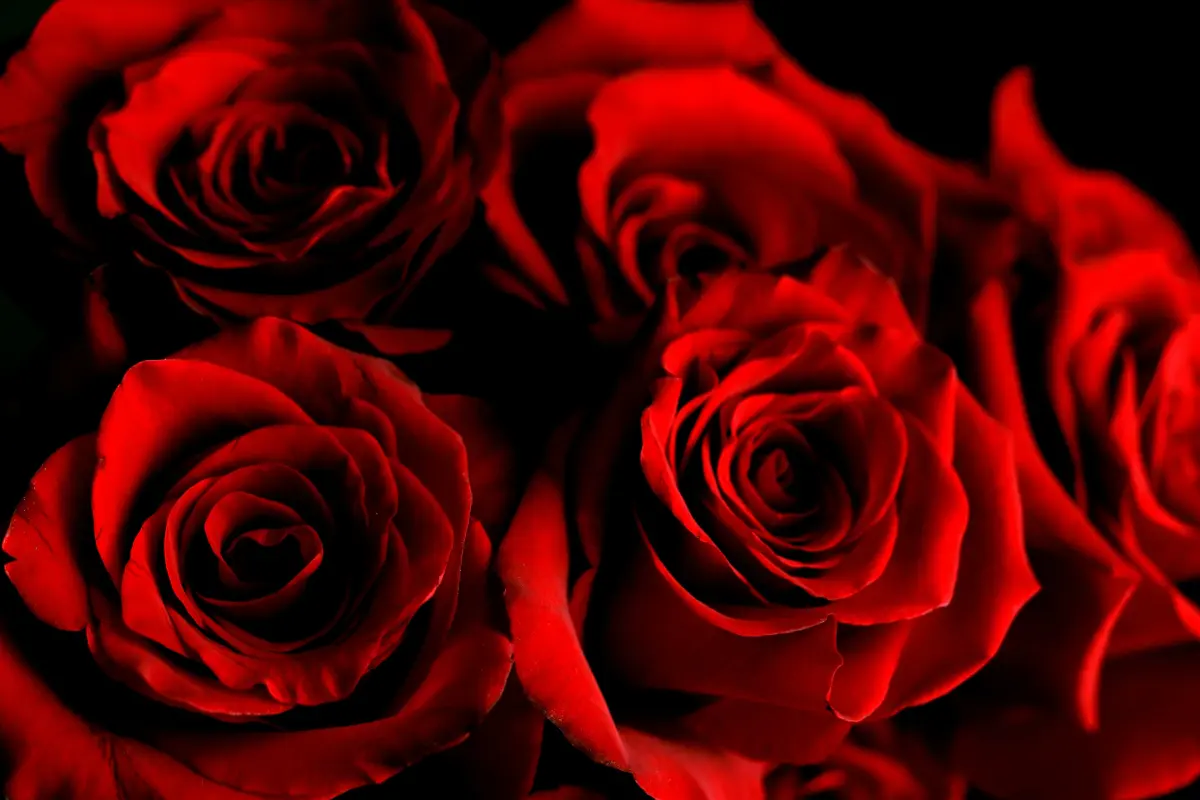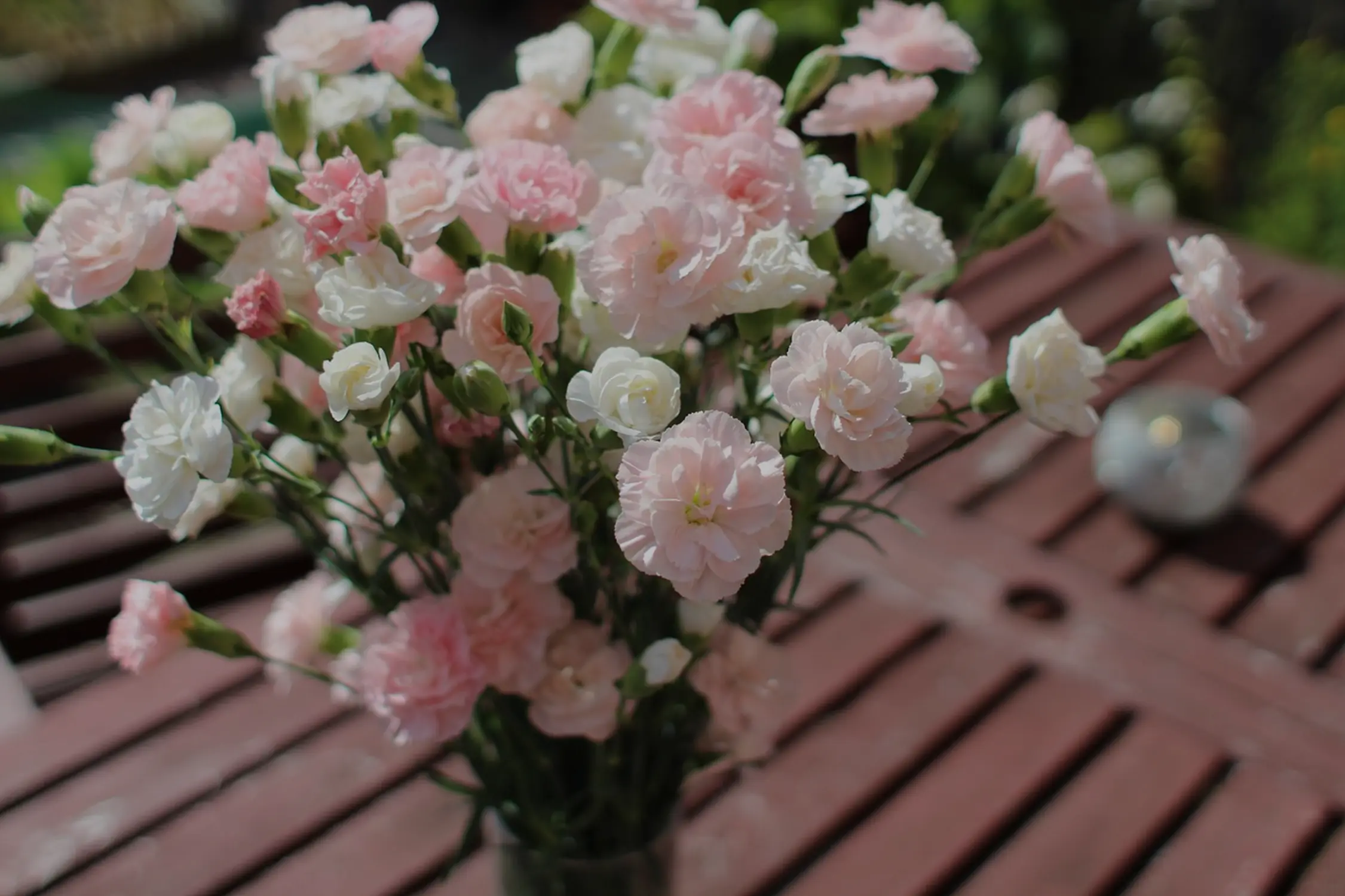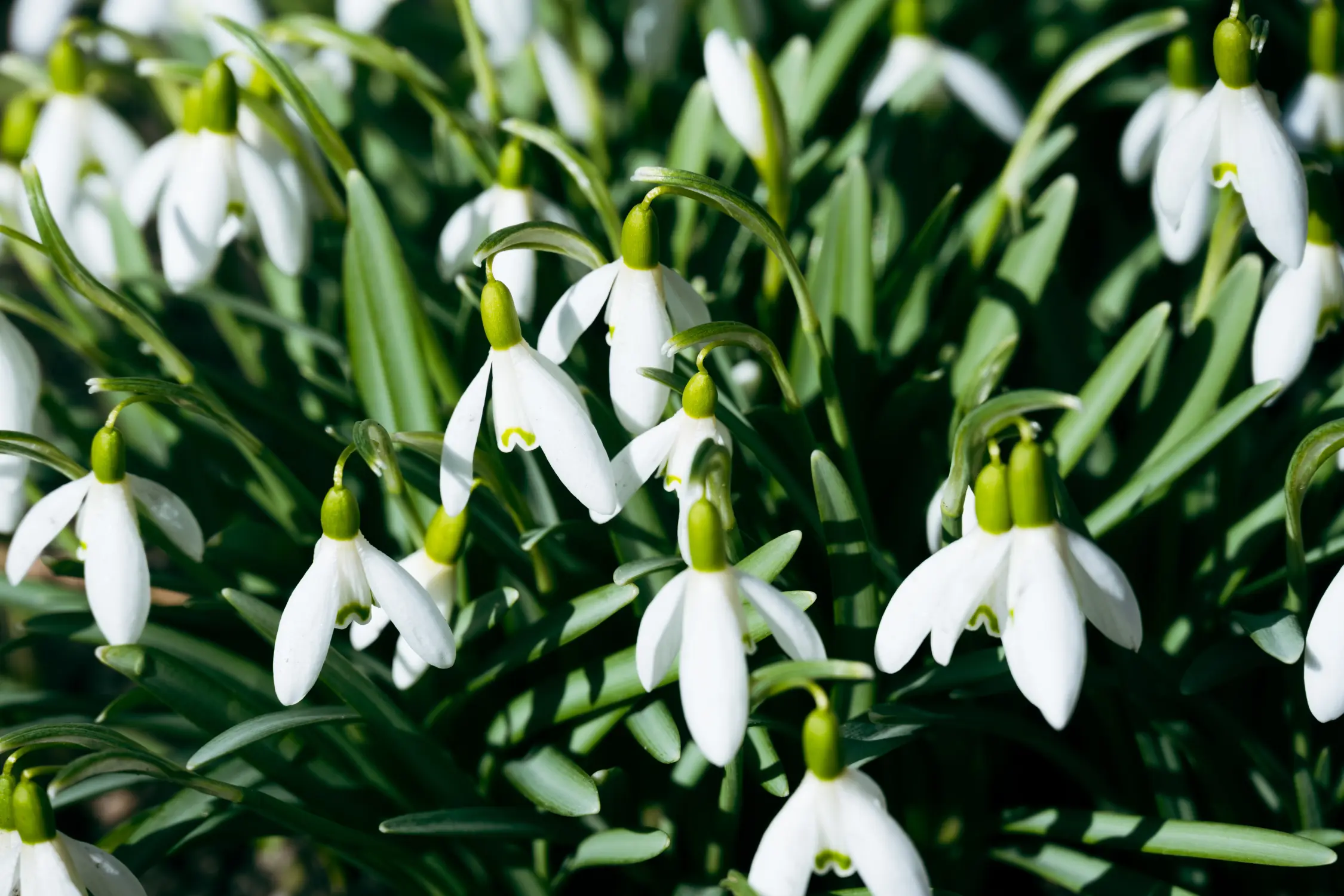You probably know your zodiac sign, or even your birthstone, but do you know your birth flower?
Knowing all about birth flowers (and their meanings) can help narrow down your flower choice options and make your gift even more meaningful.
| Birth Month | Birth Flower | Secondary Flower | Meaning |
|---|---|---|---|
| January | Carnation | Snowdrop | Admiration, Love, Hope |
| February | Violet | Primrose | Modesty, Faithfulness, Humility |
| March | Daffodil | Jonquil | Hope, Rebirth, New Beginnings |
| April | Daisy | Sweet Pea | Purity, Innocence, Blissfulness |
| May | Lily of the Valley | Hawthorn | Sweetness, Motherhood, Fulfillment |
| June | Rose | Honeysuckle | Romance, Love, Happiness |
| July | Delphinium (Larkspur) | Water Lily | Positivity, Dignity, Grace |
| August | Gladiolus | Poppy | Strength, Integrity, Remembrance |
| September | Aster | Morning Glory | Love, Wisdom, Affection |
| October | Marigold | Cosmos | Creativity, Optimism, Prosperity |
| November | Chrysanthemum | Peony | Loyalty, Honesty, Friendship |
| December | Narcissus | Holly | Hope, Good Wishes, Respect |
And to see more details about the Birth flowers including meanings and history, just click on the relevant month below.
Carnations are the January Birth flower.The carnations flowers are also referred to as dianthus which means “divine flower” or “flower of the gods”. Carnations are used to symbolize beauty, pride, and distinction. Carnations are also used to symbolize affection. It’s important to note that different colours are associated with different meanings. White carnations are associated with friendship, pink carnations are associated with romance, red carnations are associated with love and longing, while yellow carnations are used to convey rejection. |
|
Snowdrops are the January Birth flower.Snowdrops are used to express both sympathy or celebration. During happy times, it is thought to provide optimism and hope, but following a death or misfortune, it symbolizes compassion. Innocence is also linked to the snowdrop because of its colour. A single snowdrop bloom brought inside was once believed to represent death, as it was traditionally known to grow in graveyards. Nowadays, this delicate flower — often one of the first to poke through the snow in late winter—signifies hope and beauty. |
Violets are the February Birth flower.The term “Violet” is derived from the Latin term “viola”, which signifies “violet flower/ color. According to Greek tales, violet was created when a maiden transformed into this exotic flower to protect her nymph from being pursued and has ever since become a symbol of modesty. They denote spiritual wisdom, humility and a promise of everlasting faithfulness and remembrance, like an oath to always be with them. In the Christian and other traditions, the violet is particularly associated with purity and humility: one of its common names is Our Lady’s Modesty. |
|
Primroses are the February Birth flower.These multi-colored primrose February birth flowers do look like roses but aren’t related to the variant family. The origins of primrose as a February birth flower is rooted with Norse mythology, the sacred flower of goddess of love, Freya. The ancient Greeks called it the dodecatheion, flower of the twelve gods, in the belief that it healed a variety of diseases, including paralysis. The primrose is also symbolic of young love, and as a birth flower it is associated with undying affection. |
Daffodils are the March Birth flower.Daffodils are used to signify friendship and happiness. It is also the flower used to convey the feelings of one-sided love. However, daffodils are also associated with hope since they are some of the first flowers that bloom during Spring. When giving a daffodil, the message being sent is “You Are An Angel.” |
|
Jonquils are the March Birth flower.Jonquil, strictly speaking, refers to Narcissus jonquilla and tends to have clusters of fragrant flowers rather than individual ones, and tube-shaped leaves rather than the flat ones of daffodils.Its name (beloved of Scrabble players) derives from the Latin juncus, meaning rush or reed, because of the leaf shape. When you miss someone close to your heart, Jonquils are a perfect way to remind them of you and that you wish to have them around as Jonquils are considered to symbolize remembrance. |
Daisies are the Birth Flower of AprilThe word “daisy” comes from an Old English phrase “Daes eage,”. It means “day’s eye” manifesting them glowing in the sunny days and shutting their petals at night. Daisies are some of the first flowers that bloom when the sun shows up wishing you a good morning. As a birth flower for April, the daisy is associated with purity and innocence. If you’d like to know more then have a look at our 10 interesting facts about daisies article |
|
Sweet Peas are the April Birth FlowerWith 5 unsymmetrical blooming petals mimicking the butterfly wings, they bloom in clusters of 10-12. Having spread across the world, this flower has various species occurring in all shades. It includes white, pink, purple, blue, red, peach, and sometimes even in multicolour swirls and stripes. Gifting this to a loved one signifies that you miss them. Sweetpeas of all colours have a symbolic meaning. It’s an oath of faithfulness in affectionate relationships. The richly coloured blooms & delicate petals have an elegant aesthetic. It pairs well with every other flower or even individually. If you’d like to know more then have a look at our 10 interesting facts about sweet peas article |
Lily of the Valley is the May Birth FlowerThe sweetly-scented woodland flower is characterized by its bell-shaped white flower heads that open in late spring. Because the flower blooms in May, it’s also called May bells. The flowers symbolize sweetness, motherhood and humility and are often used in wedding bouquets. |
|
Hawthorn is the Birth Flower of MayThe hawthorn is technically a tree and can grow into a beautiful hedge with white or pink blossoms. Sometimes known as the May tree, because that’s when its pink and white blossom emerges in all its glory, it’s often used as a hedge. In fact the name of the fruit, the haw, comes from the Old English haga, meaning hedge. Flowering branches of the hawthorn are highly decorative, and were often placed on display on 1 May. People went “a-Maying”, gathering the branches and placing them above their front doors for good luck. |
The Rose is the Birth Flower of June.Its sweet fragrance and timeless beauty heralds the advent of summer like no other bloom. The name “rose” is derived from the Latin word rosa. During the height of Rome, roses were grown extensively in the Middle East and used as medicine, perfumes, and at celebrations as confetti. Red rose symbolizes love and romance and is perfect for special occasions Pink rose symbolizes gratitude, charm, and appreciation. Orange rose symbolizes excitement and courage. Yellow rose symbolizes friendship. White rose symbolizes faith and purity. |
|
Honeysuckle is the June Birth flower.When you step out of the back door in the evening and the honeysuckle’s fragrance is at its most overpowering, you know summer has well and truly arrived. Because most honeysuckles are clinging climbers, they have been used to signify love that binds two people together – and of course, because of their nectar, they’re emblematic of sweetness. |
Delphinium (larkspur) is the July birth flower.Often expressed as “wearing one’s heart on the sleeve”. Larkspur is used to symbolize openness and lightness, as well as the fickleness. There are secret meanings to three colours including “Fickleness” (pink), “Joyful, Happy-Go-Lucky” (white) and “You Have Such A Sweet Disposition” (purple). The spur of the flower, which is reminiscent of parts of a lark, created this flower’s name. |
|
Water Lily is a July Birth flower.These long-lasting blooms are considered sacred and an important religious symbol in Hinduism and Buddhism. The flowers signify rebirth and renewal. Since the blossoms emerge from the mud, they are also a symbol of enlightenment. |
Gladiolus is the August Birth flower.Glads, as they are often called, are native to tropical and South Africa and are any plant of the genus Gladiolus. The flower was named after the gladiators because of the sword-like shaped blooms. Gladiolus is associated with strength and courage because of their shape. They are also associated with sincerity and forthrightness. – Red gladioli symbolize love. |
|
Poppy is the August Birth flower.The poppy’s symbolism is double-edged: it stands for sleep and repose, but also for intoxication and death. Each of those poppies in the Flanders fields is the soul of a departed soldier, and in The wizard of Oz, Dorothy is lulled to sleep by a sinister field of these flowers. – Red poppies: Represent remembrance and happiness |
Aster is the September Birth flower.The shape resembles a star which gave the flower its name. According to Greek mythology, the goddess Astraea once cried over a dark sky with too few stars to lighten up the night. Where her tears fell to the ground, beautiful star-shaped flowers grew. – Purple asters symbolize wisdom and royalty. Purple asters are the most popular color. |
|
Morning Glory is the September Birth flower.For these reasons, morning glory has become a pretty poetic symbol of human resilience and the fleeting nature of this life. The different states of the morning glory flower are also said to represent the various stages of human life. In morning bud they represent youth, in full bloom at daytime they represent adulthood and as they wilt in the evenings, they represent the later stages of life. – White morning glories are symbols of purity and innocence |
Marigolds are the October Birth flowerWith their vibrant orange, yellow and red petals, naturally marigolds are symbols of positive emotions, like joy and excitement. Marigolds also represent energy, good luck, warmth, creativity, prosperity, passion and more. Historically the marigold was believed to have healing properties, and the common marigold is still widely used around the world to heal cuts and bruises. Its flowers and leaves are edible, and can be used in soups, salads, and other dishes. |
|
Cosmos is the October Birth flowerThe cosmos is a member of the sunflower family. It is a herbaceous perennial or annual, ranging from one to six feet high and with flowers in a huge range of colours. In the past cosmos flowers were kept on dinner tables as they symbolized harmony among the family members. And still today the cosmos is associated with order, tranquility, and balance. |
Chrysanthemums are the November Birth flowerThey were first cultivated in China many centuries ago, and have appeared in ancient Chinese writings since 15th century BC. The Chinese used the chrysanthemum as an herbal remedy for various ailments such as headache relief, reducing blood pressure and as an anti-inflammatory. Chrysanthemums are used to symbolize friendships. However, chrysanthemums just like marigolds are associated with different meanings depending on the region. In some regions, they are sometimes used to convey secret love. While in others they are used to convey feelings of sympathy because they are associated with death. But there’s no need to worry about that in the UK where, as the birth flower for November, it stands for friendship, honesty and loyalty. |
|
Peony is the November Birth flowerWith centuries of history and symbolism, there’s so much more to the peony than its beauty. Like many other flowers, peonies can represent many different qualities with the most common being honor, compassion, happiness and good fortune. Each colour of the peony also carries its own meaning |
Narcissus is the December Birth flowerThe narcissus can often be confused with the daffodil, the birth flower for March, which is a type of narcissus. The term “narcissus” comes from the Greek word for “narcotic”, but it is also linked to the myth. Narcissus was the son of a nymph and river god who fell in love with his own reflection as a result of his beauty. He eventually drowned due to his obsession with himself. Shortly thereafter, the first narcissus flower bloomed at that very spot. The flower is used to symbolize Hope, Good Wishes and Respect As a symbol of hope, the narcissus has become an emblem for cancer societies around the world. |
|
Holly is the December Birth flowerIt’s also one of the festive season’s most famous plants – right after the mistletoe, of course. This versatile plant has over 200 varieties, often with the prickly leaves and red berries we’ve come to associate with Christmas. While the fruit is often eaten by animals, it’s semi-toxic to humans. The most common symbolism for holly is that it denotes happiness at home. |
Discussion
Related Posts
If you enjoyed reading this, the please explore our other articles below:

